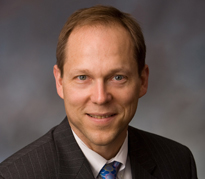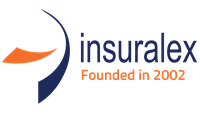
The U.S. Treasury Department released new implementation guidance on April 6, 2020 regarding the Paycheck Protection Program (PPP), including changes to interpretations for loan amount calculation. Additionally, the new guidance provides relaxed standards for applicants and underwriting banks. These changes could have a material impact on a borrower’s loan amount (it will likely increase the loan amount) and should make the funding process much more efficient. Even though the guidance may not be entirely consistent with certain provisions of the CARES Act, borrowers and lenders have been reassured by the following statement contained in the guidance: “Borrowers and lenders may rely on the guidance provided in this document as SBA’s interpretation of the CARES Act and of the Paycheck Protection Program Interim Final Rule ***. The U.S. government will not challenge lender PPP actions that conform to this guidance, and to the PPP Interim Final Rule and any subsequent rulemaking in effect at the time.” Where the new guidance may differ from the text of the statute, we note those differences in blue text below. To aid the reader, we provide the following chart that identifies key updates contained in the April 6, 2020 guidance.
| Issue | Guidance Clarification |
|---|---|
| “Small business concern” | A “small business concern” under 15 USC § 632, even one with more than 500 employees, may participate in the PPP. The PPP is an expansion on the requirement that only small businesses can qualify for a SBA loan. The PPP permits participation by business entities that do not qualify as a “small business concern” to participate, including businesses with fewer than 500 employees with US residency, qualifying 501(c) tax exempt organizations, veterans organizations under 501(c)(19), tribal businesses, sole proprietors, and independent contractors. |
| Affiliation rules | Borrowers must apply the affiliation rules contained in the SBA’s Interim Final Rule of Affiliation. |
| $100,000 compensation cap | The $100,000 cap applies to cash compensation only, not non-cash benefits which include employer retirement contributions, health care benefits, or payment of state and local payroll related taxes. This means that Payroll costs for employees earning in excess of $100,000 annually can be increased (or “stacked”) for employer contributions to defined-benefit or defined-contribution retirement plans; payment for the provision of employee benefits consisting of group health care coverage, including insurance premiums; and payment of state and local taxes assessed on compensation of employees. |
| Applicable time period to determine FTE status and payroll costs to calculate maximum loan amounts | To determine payroll costs and FTE amounts, borrowers can base calculations either on previous 12 months, or calendar 2019. Seasonal businesses have different time periods. Additional guidance was provided for determining FTE status for businesses that have not been operational for 12 months: “the average number of employees per pay period in the 12 completed calendar months prior to the date of the loan application (or the average number of employees for each of the pay periods that the business has been operational, if it has not been operational for 12 months).” |
| Accounting for federal taxes when determining payroll costs for purpose of maximum loan and loan forgiveness amounts | Payroll costs are calculated on a gross basis without regard for federal taxes imposed or withheld. Borrowers do not add to payroll costs the employer’s share of FICA or Medicare and do not decrease payroll costs by the employee’s share of FICA or Medicare or federal income tax withholdings. |
| Amending application given new guidance | Borrowers and lenders can rely on the laws, rules, and guidance existing at the time of a PPP application, but if the application has not been processed, a borrower may revise its application based on clarifications in current guidance. |
On March 27, 2020, the President signed into law the “Coronavirus Aid, Relief, and Economic Security Act” or the “CARES Act.” Key components of the CARES Act include loans to help businesses minimize the economic impacts of the COVID-19 virus. Two loan options under the CARES Act are: the Economic Injury Disaster Loans & Emergency Economic Injury Grant (EIDL), and the Paycheck Protection Program (PPP). This article focuses on the PPP which can help companies pay their staff, interest on their mortgages or their rent, and utilities for an eight week period at no cost to the business. This is a first-come, first-served program, so time is of the essence in pursuing this opportunity.
Authors
 Laura Caldera
Laura Caldera
Portland, Shareholder
Direct Dial: 503.499.4602
Fax: 503.295.0915
E: laura.caldera@bullivant.com
 Thomas L. Hutchinson
Thomas L. Hutchinson
Portland, Shareholder
Direct Dial: 503.499.4582
Fax: 503.295.0195
E: tom.hutchinson@bullivant.com





